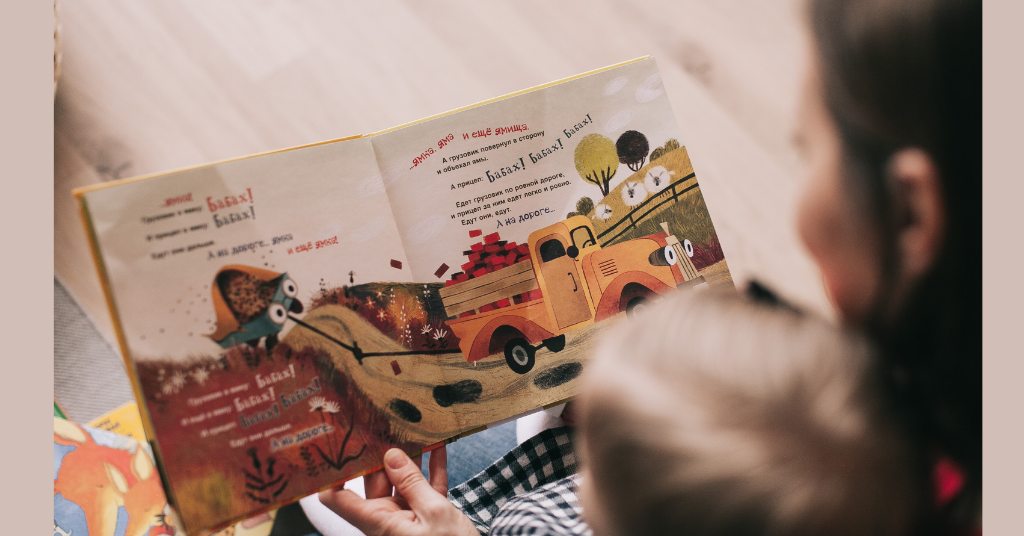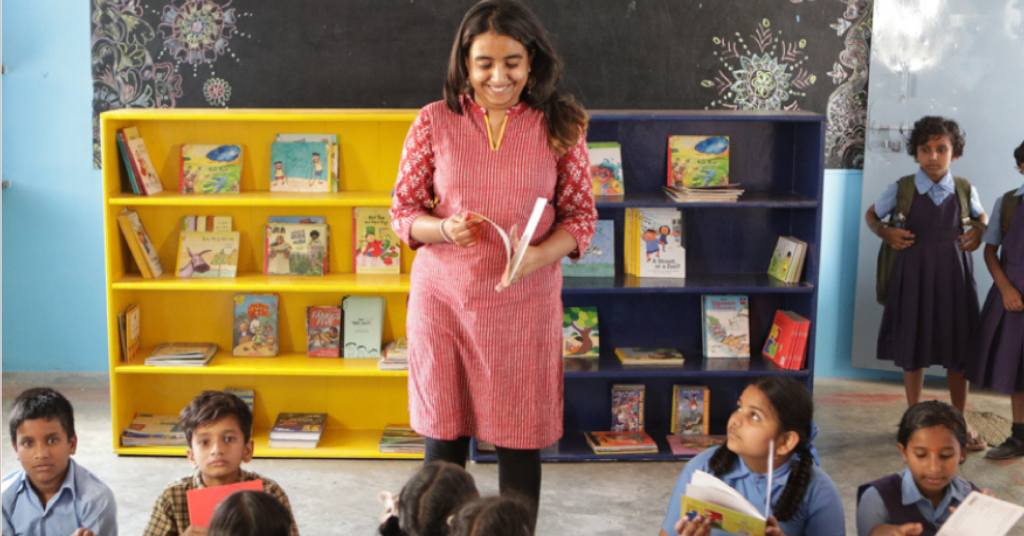Storytelling is a powerful tool for teachers and parents to interact and communicate with children. It is an effective tool that our ancestors used to convey magnificent mythical stories, cultural history, values, knowledge, and morals. Effective storytelling techniques for teachers can make a difference in the lives of kids. Words have energies to make a difference in the lives of kids. Stories can inspire kids to learn new things, stimulate their creativity, and expand their understanding of the world around them. And who doesn’t like a good story? Kids love to listen to stories because they pique their curiosity and stir their imagination. Children who are exposed to a lot of stories have a strong understanding of the human spirit, they are likely to develop strong empathy and a sense of responsibility towards others.

In addition, storytelling and a child’s early socialization go hand in hand. According to the research, storytelling fosters empathy, improves cognitive development, and establishes a foundation for psychological, linguistic, and emotional skills. Parents and teachers can learn effective storytelling techniques to welcome kids into the world of empathy, kindness, honesty, compassion, etc. Furthermore, using effective storytelling techniques will assist students in improving their communication skills, learning about diction, diversified vocabulary, and metaphors.
In this article, you will learn 8 effective storytelling techniques that will make you a great storyteller.
8 Effective Storytelling Techniques For Teachers & Parents
1. Transport Kids To Another World

When a narrative is well-told, it should provide a mental movie and transport children to another magical realm. Use simple words that are easy to imagine rather than complex words. The most effective strategy is to use words that transport children to another world and pique their interest and imagination. Kids can remember and retain larger chunks of knowledge for longer periods when teachers use visual storytelling strategies. Tell your tale in a style that allows your audience to hear, smell, feel, and see what you’re attempting to narrate.
2. Clear & Effective Story Structure

The framework of the narrative should be clear and effective for the audience. There must be a beginning, a middle, and a pleasant finish to a narrative. It is one of the most successful story techniques where a storyteller sparks the interest of the listener through the clear story structure. Kids are more inclined to pay attention and even ask questions if they become inquisitive while listening to a narrative. It should start with an inciting incident, a dramatic event that is unexpected and surprising and has a significant impact on the protagonist of the story. The story should then take them through a sequence of unexpected occurrences, build to a climax, and ultimately lead them to a joyful ending.
Related Article: 10 Astounding Benefits of Storytelling for Kids
3. Craft Your Narrative Around Conflict

If you want to be a great storyteller, craft your narrative around conflicts and obstacles. It is a powerful and effective storytelling technique for involving the audience in the narrative. Try to weave obstacles in the life of the protagonist. Make it encouraging and inspiring for the youngsters. This technique is utilized to teach students how challenging it is to achieve something in life. The audience should see their central characters working hard and putting sufficient effort to achieve their objectives and goals. Children should be taught the value of hard work and effort via stories like this. You can consider it as one of the most vital techniques.
4. Characters Are Soul Of Any Story

Bring characters to life because their fortunes and misfortunes are what move the audience. You can describe the physical appearance and provide small details about the character so that the audience can relate and connect with them. This is also one of the most effective storytelling techniques because it elicits feelings such as empathy and compassion in children. They also get connected to characters which activate mirror neurons as well. Mirror neurons are vital if you want kids to associate with other emotions such as sadness, melancholy, happiness, anger, and more. Storytelling is a powerful technique that can introduce kids to various emotions and let them understand the difference between good, bad, right, and wrong.
5. Create A “What Will Happen Next” Moment

Kids who are great fans of storytelling completely immerse themselves mentally into the stories. As a result, suspense is an essential component of any storyline since it transports the audience to the “what will happen next” moment. Suspense lets kids’ attention intact with the storyteller. They get more excited to know how the story unfolds. So, one of the fantastic storytelling techniques is for a teacher to put the audience right in the heart of the action and then go back and explain how it all happened. Moreover, suspense is a great technique to expand a child’s thinking skills. Kids ponder about alternative outcomes, form ideas, create concepts, and understand the difference between right and wrong behavior because of this essential component.
Related Article: 7 Reasons Why Your Kids Should Learn Storytelling
6. Keep The Story Crisp, & Concise

Long stories often cease the interest of the kids. Children already have a short attention span, so introducing lengthy stories will quickly lose their interest. It is one of the good storytelling techniques to keep the story short and crisp so that the audience stays engaged until the ending. The storyteller’s goal should be to convey useful knowledge and information to the listener in a short amount of time to help them retain the moral of the story for a longer periods of time,
7. Put Your Personal Touch To The Story

Add your own life experiences to the narrative if you’re writing it to entertain, motivate, or deliver information. It will make a profound touch to the hearts of the listeners. To make a story more effective, we need to make sure that it is relevant. One of the greatest techniques to make it relevant is to draw on your own life experiences and tie them to the subject you’re trying to convey. It will also improve the reader’s enjoyment of the story. A good narrative tells a true story, and this is why it is so powerful. It should not be a fake, but rather a genuine experience. There should be a message in the story. It might be a recall of a particular life lesson, something about self-improvement, something motivating, or a reminder to accept responsibility.
8. End With A Positive Resolution

A good story always unfolds from challenges to a positive solution. End a story with positive and memorable notes that kids could remember forever. A happy ending sparks the hearts of kids, and it motivates them to encounter failures, drawbacks, and challenges. A story should leave a favorable, rather than a bad, impression on their hearts. A satisfying conclusion is a reward. A narrative should end on a positive note, encouraging children to take action in life, even when it appears difficult. This makes kids want to tell their friends or relatives about the story and share the experience and information they received from hearing it. A happy ending usually gives the listeners a sense of pleasure and accomplishment, making them feel proud and delighted.
Conclusion
Storytelling is a great tool for eliciting emotions in children. Children receive knowledge and values through stories that are essential for them to survive in this world. It is a powerful tool for a child’s emotional, psychological, and mental growth. Through storytelling, children learn about history, new concepts, and opinions from all over the world.
As a result, as a teacher or a parent, you need to incorporate excellent and effective storytelling techniques if you want to teach them good values, inculcate morals, motivate them, or inspire them with your stories. These 8 effective storytelling techniques mentioned above will make you a great storyteller. Moreover, if you are a great storyteller and an enthusiast who loves to pass down knowledge through captivating stories, join hands with PiggyRide and spread the knowledge and information about the beautiful world through our platform.
This platform also welcomes parents to enroll their kids in online storytelling classes to expand their imagination and curiosity. Get ready to experience the world of stories with the best storytellers!


Leave a Reply